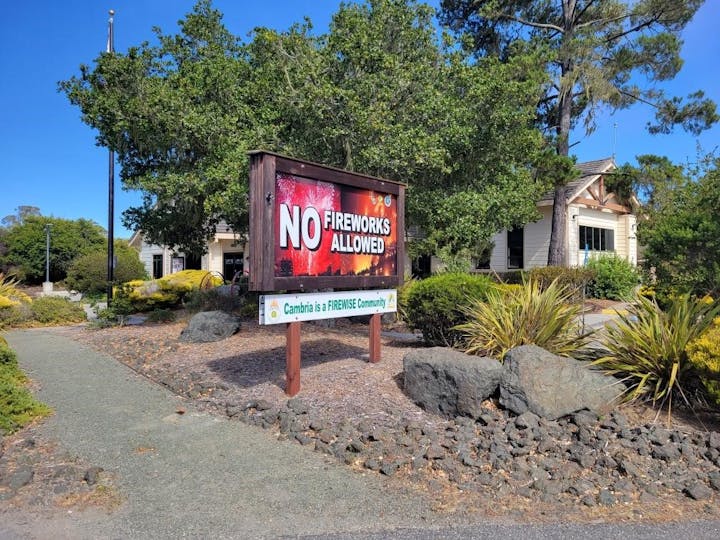Assess the Fire Risk of Your Home
In Cambria, many homes are at risk of wildfires due to their construction materials or their location. Residents in fire-prone homes should plan to evacuate as soon as fire threatens their structures.
For those living in fire-safe homes, staying put may be safer than attempting to drive away. However, if you reside in a densely forested area, ensure you have adequate defensible space around your home. This space can prevent a fast-moving wall of flames from reaching your property. Without it, your home may be vulnerable to fire.
If you live in a flat, un-forested area, prepare for the possibility of burning embers from distant wildfires. To make your home more fire-safe:
- Ensure that nothing adjacent to your home can ignite and allow fire to spread to your residence.
Simple Fire Safety Test: Walk around your home and assess potential fire risks. Consider the following:
- If a burning highway safety flare were dropped in your area, would it ignite grass, spreading to nearby bushes or trees?
- Would the fire travel under the eaves of your house or ignite any wood piles or debris next door?
By identifying and eliminating fire pathways to your home, many can transform their fire-prone houses into fire-safe havens.
Vegetation Control
Following are important tips in reducing vegetation to minimize fire risk to your home or business:
- Remove dead vegetation from the exterior of your home. In a flat area, there should be a minimum 30-foot clearance; in a steep or hilly area, 50 to 300 feet of clearance is necessary.
- Oil/resin filled plants such as Coyote Brush and Scotch or Irish Broom burn as if they're soaked in kerosene. They should be reduced or eliminated. Contact your nursery staff for a list of fire resistive plants.
- All trees over 20 feet in height should be limbed 6 feet up from the ground.
- Ground debris, grass, and other plants should be trimmed to a maximum of 4 inches. These should be disposed of by chipping or hauled to a green waste facility.
- Clear roofs and rain gutters of dead vegetation.
- Place woodpiles away from your home or business. Cover them with a heavy cotton tarp.
- Create a minimum 10-foot clearance around the wire from the electrical pole to your home.
- Place a 1/4 inch mesh spark arrestor around chimneys and clear tree limbs from within 10 feet. This will reduce the chance of burning embers from your chimney escaping and igniting a wildfire or a neighbor's home.
- Ensure all fuel containers or propane tanks have a minimum 10-foot fuel break around them.
Roof and Deck Protection
There are a number of ways you can protect your roof and deck from burning during a fire, including:
- If you plan to replace your roof, purchase a non-combustible one.
- Fire-resistant wood roofs do not stay fire resistant longer than 8 years.
- In a wildland fire, your wooden deck may catch fire first.
- Enclose the underside of your deck with fire-resistant materials.
- Place solid sheeting on your deck's surface so burning embers carried by the wind cannot ignite decking material, and especially the leaves and other materials that collect in the gaps.
- Install residential sprinklers under your deck that will activate the head(s) when a fire gets hot enough. These are inexpensive and can be installed by a plumber with a C-16 state license.
- Remove firewood and other combustible debris from under wooden decks.
- Keep combustible deck furniture away from your home.
Standby Generator Safety
Click on the links below to find out how to hook up a standby generator properly and operate it safely.
How to Hook up a GeneratorCorrect Use, Care and Operation of a Generator

